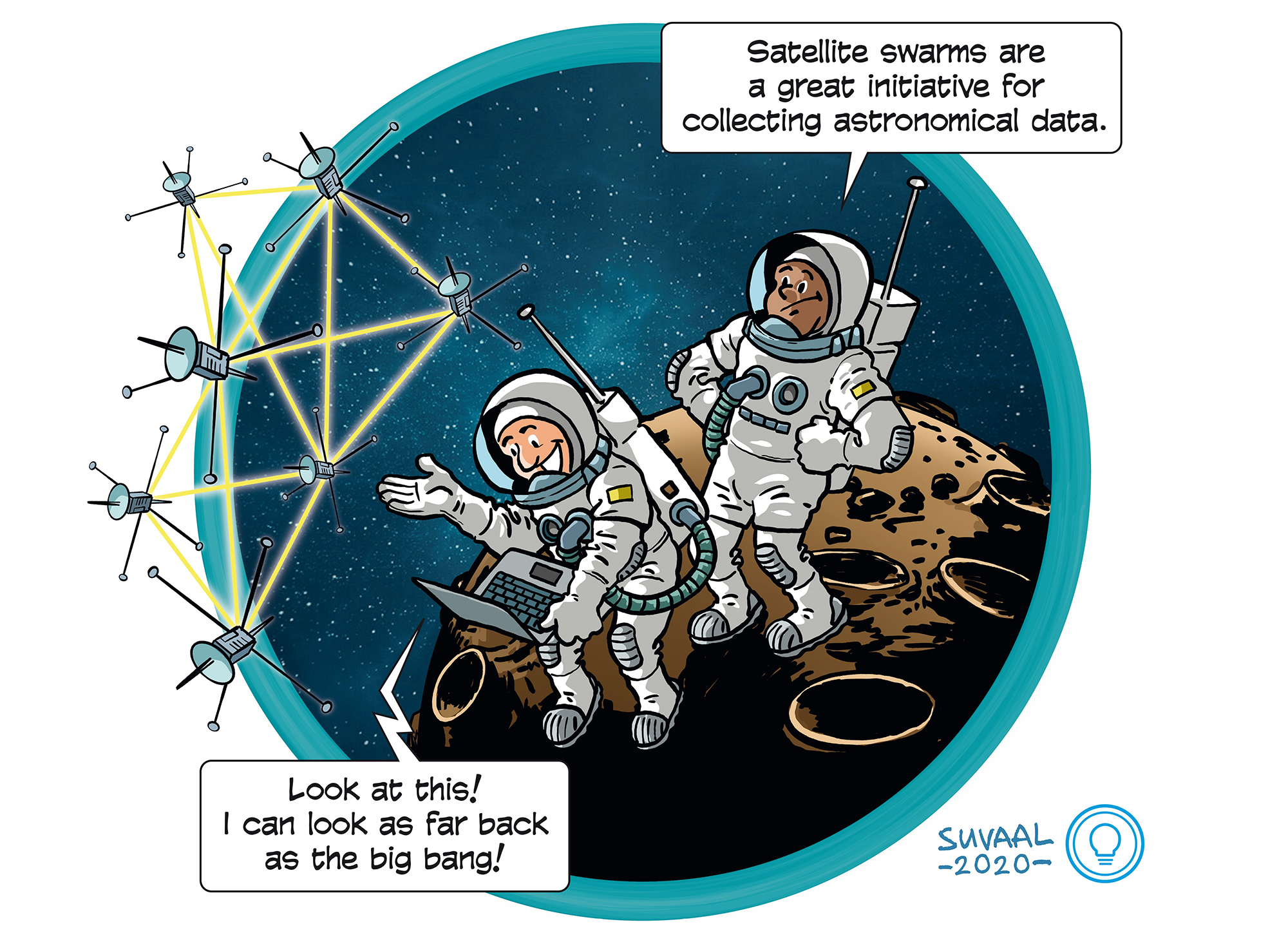Orbiting low frequency array (OLFAR)
Themes: Astronomy, Aerospace, Signal processing


A TRL is a measure to indicate the matureness of a developing technology. When an innovative idea is discovered it is often not directly suitable for application. Usually such novel idea is subjected to further experimentation, testing and prototyping before it can be implemented. The image below shows how to read TRL’s to categorise the innovative ideas.
Summary of the project
One of the last unexplored frequency ranges in radio astronomy is the frequency band below 30 MHz. This band is scientifically interesting for exploring the early cosmos at high hydrogen red shifts, the so-called dark-ages. This frequency range is also well-suited for discovery of planetary and solar bursts in other solar systems, for obtaining a tomographic view of space weather, and for many other astronomical areas of interest. Because of the ionospheric scintillation below ~30 MHz and the opaqueness of the ionosphere below ~15 MHz, earth-bound radio astronomy observations in those bands would be severely limited in sensitivity and spatial resolution, or would be entirely impossible. A radio telescope in space would not be hampered by the earth’s ionosphere, but up till now such a telescope was technologically not feasible. However, extrapolation of current technological advancements in signal processing and small satellite systems imply that distributed low frequency radio telescopes in space could be feasible in coming decade.
Clearly, only a distributed aperture synthesis telescope-array would be a practical solution. In addition, there are great reliability and scalability advantages by distributing the control and signal processing over the entire telescope array. The researchers aim to build a distributed autonomous system of small satellites for space-based radio astronomy, with on-board antennas for very low radio frequencies (0.8-80Mhz). The satellite swarm will collect valuable science data on the quiet far-side of the Moon, and transmit the data down to Earth while in the near-side. For sufficient spatial resolution, a low frequency telescope in space needs to have an aperture diameter of over 10 to 100 km and will consist of hundreds to thousands of such satellites. In 2018, the Change’4 mission to the Moon carried the NCLE payload (Netherlands-China Low-Frequency Explorer) which is a single-antenna system for radio astronomy.
What's next?
Currently, the PIPP-OLFAR consortium (2018- present) comprising of over 15 research organizations and industries across NL are working towards tackling fundamental challenges in space-based interferometry. The next step for this innovative idea is for the distributed system of satellites to hitch a ride into space to realize OLFAR.
Dr. ir. Raj Thilak Rajan
Dr.ir. Chris Verhoeven
Prof. dr. ir. Eberhard Gill
Prof. dr. ir. Alle-Jan van der Veen
TU Delft Space Institute
Faculties involved
- Faculty of Electrical Engineering, Mathematics and Computer Science
- Faculty of Aerospace Engineering
